When you think of Japanese snacks, you might picture Pocky or colorful convenience-store candies. But tucked away in backstreets is a nostalgic world called the dagashi-ya (traditional penny-candy shop). These tiny stores were once an after-school paradise for kids—packed with quirky sweets, toy capsules, and lottery-style games you can try for just a few coins.
Today, stepping into a dagashi shop is more than buying cheap treats; it’s a bite-size way to experience retro Japan. With around 100 yen, you can fill a small bag, chat with the friendly shop owner, and feel like a kid again.
What is Dagashi?
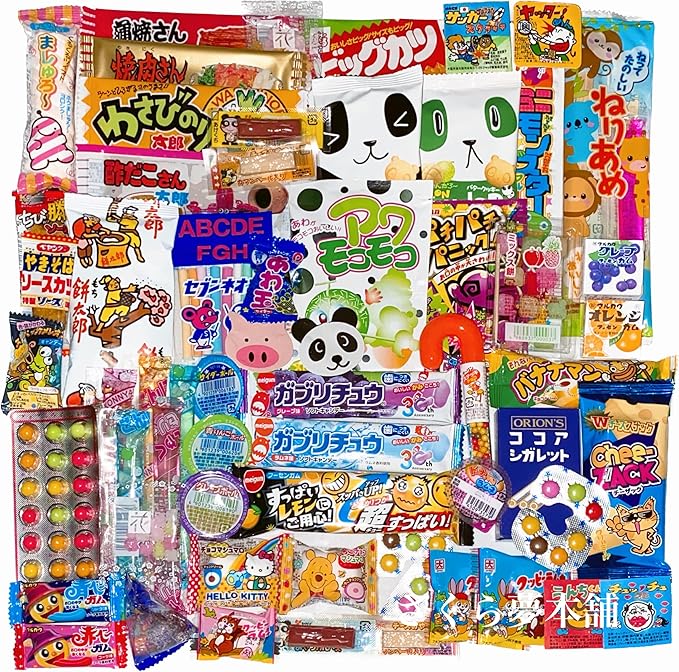
Dagashi (駄菓子) literally means “cheap sweets,” but the idea goes far beyond price.
These small candies and snacks were designed to be affordable for children—often costing between 10 and 50 yen each. Instead of focusing on premium quality, dagashi are about fun, surprise, and variety.
You’ll find colorful packaging, funny characters, and even snacks that include small toys or playful challenges. Some dagashi are DIY-style kits where you mix powders, shape candy, or make mini versions of real foods.
In short, dagashi are not just sweets; they’re a piece of Japanese childhood culture that adults still enjoy for nostalgia.
The Unique Atmosphere of a Dagashi Shop

Stepping into a dagashi shop feels like traveling back in time. The wooden shelves, handwritten price tags, and rows of glass jars filled with colorful candies create a warm, nostalgic atmosphere. Bright posters from the Showa era line the walls, and the mix of sweets and toys makes the space feel more like a playground than a store.
Unlike modern convenience stores, dagashi shops invite you to slow down, look around, and enjoy the little surprises hidden on every shelf. For many Japanese adults, the smell of old candy wrappers and the sound of rattling toy capsules instantly bring back childhood memories. For travelers, it’s a chance to see a side of everyday Japan that rarely appears in guidebooks.
Must-Try Dagashi Snacks
If you visit a dagashi shop, here are some classic treats you shouldn’t miss:
Umaibo (うまい棒)
A 10-yen corn puff stick that comes in tons of flavors—Cheese, Corn Potage, and Takoyaki are fan favorites.
My impression: The Cheese flavor is my go-to. It’s light, salty, and somehow never gets old.
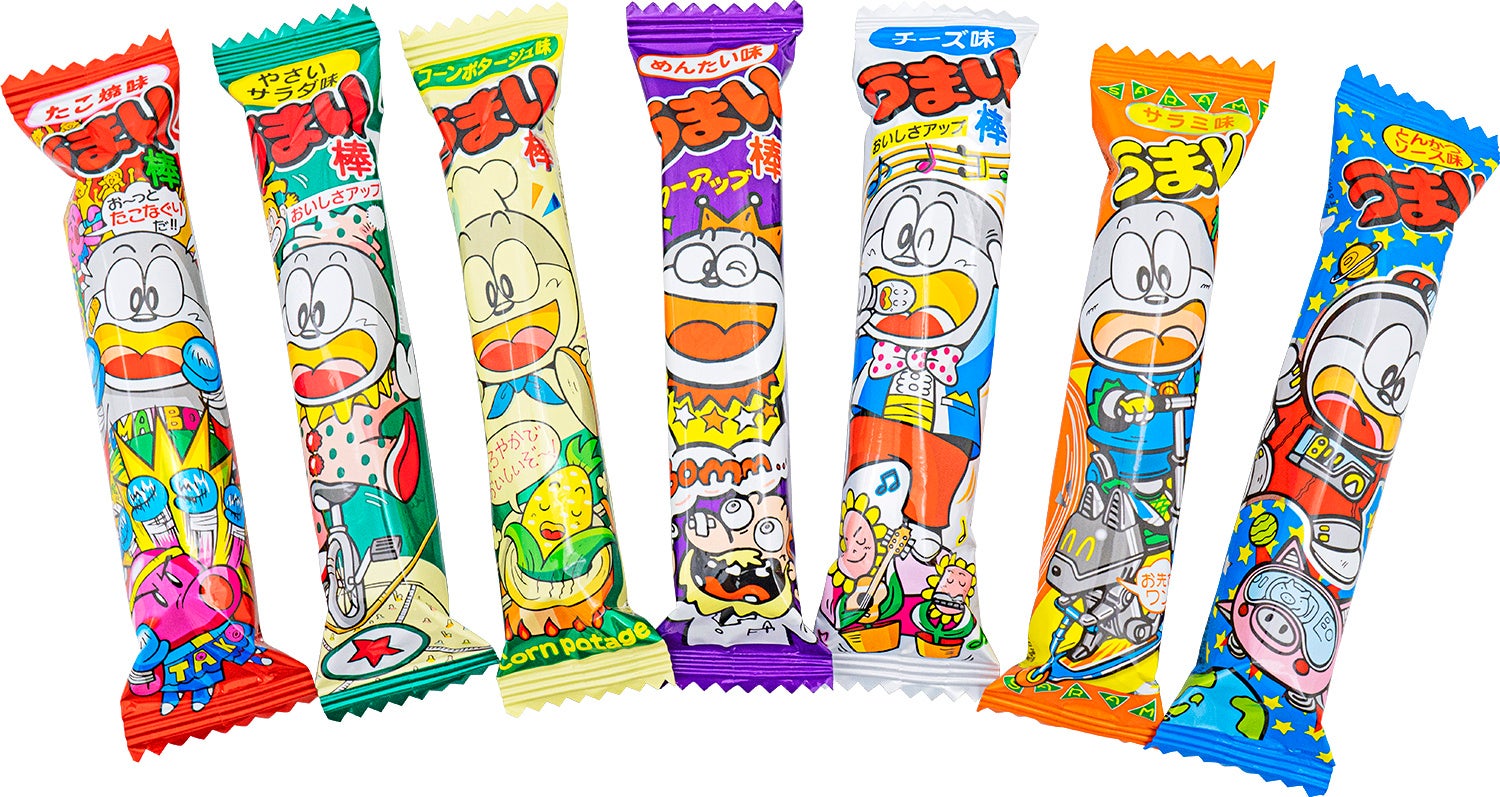
Baby Star Ramen (ベビースターラーメン)
Crunchy dried noodles seasoned like ramen. It’s cheap, salty, and super addictive.

Black Thunder
A chocolate bar mixed with cookie chunks and rice puffs. It’s crunchy and satisfying.
My impression: It feels too good to be a “cheap snack.” One bite and you understand why it’s famous.
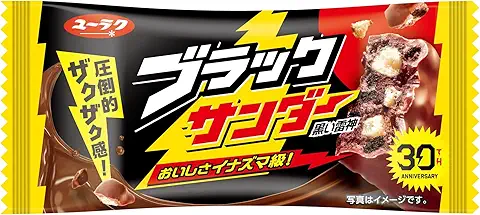
Cabbage Taro (キャベツ太郎)
Corn puffs coated in a sweet-and-savory sauce flavor. Despite the name, it doesn’t taste like cabbage!
My impression: The sauce smell hits first—but it’s weirdly addictive once you start eating.

Kabayaki-san Taro (蒲焼さん太郎)
A thin, grilled fish snack with a sweet soy glaze, inspired by eel kabayaki.
My impression: The smell is strong—but I kind of like that smoky flavor.
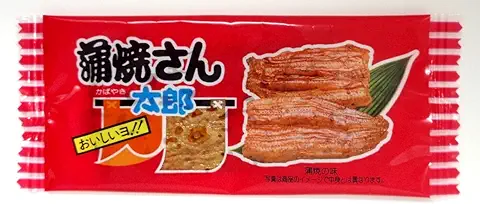
Young Donuts
Tiny sugar-coated donuts sold in packs of four. Simple, soft, and nostalgic.
My impression: They taste like childhood. Soft, sweet, and always comforting.

Kinako Stick (きなこ棒)
A chewy candy coated with roasted soy flour. Mildly sweet and powdery.
My impression: It’s soft and calm—perfect when you want a break from strong flavors.
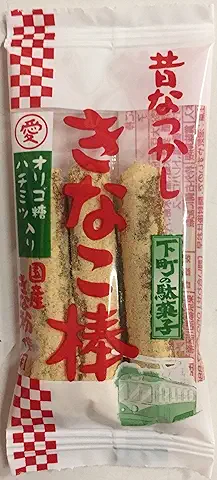
Yoguret (ヨーグレット)
Yogurt-flavored candies with a refreshing sour taste. Slightly fizzy and unique.
My impression: It’s like a mix between candy and medicine—but in a good way.

Miyakono (都こんぶ)
Thin, soft kelp strips covered in a sweet-and-sour powder. A truly Japanese taste.
My impression: This one’s a challenge—it’s salty, sour, and chewy all at once!
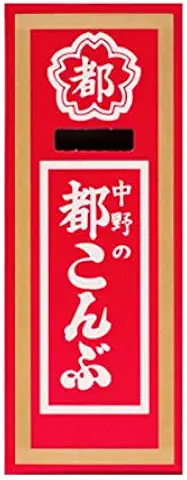
Where to Find Dagashi Shops
Dagashi shops can still be found all over Japan, but many are hidden in quiet neighborhoods or local shopping streets (shotengai).
If you want to experience the old-school atmosphere, here are some great places to start:
- Tokyo – Asakusa and Shibamata:
These areas keep their retro charm with traditional candy shops and Showa-style stores. “Kameido Umeyashiki” also has a famous dagashi corner. - Osaka – Shinsekai and Kuromon Market:
Great for tasting cheap local snacks while exploring vibrant food streets. - Kyoto – Nishiki Market:
A mix of modern and traditional stores; you might find dagashi next to local pickles or tea shops. - Nagoya – Osu Shopping District:
Known for its quirky stores and vintage vibe, with a few dagashi stalls tucked inside the arcades. - Theme stores:
Some chain stores like Dagashi Bar in Tokyo and Nippon Dagashi Museum in Okayama recreate the nostalgic vibe with a modern twist.
Many convenience stores and souvenir shops now sell “retro dagashi packs,” so even if you can’t find a real dagashi-ya, you can still enjoy the experience anywhere in Japan.
Tips for Visitors
-
Bring coins
Many dagashi shops are cash-only, and most items cost under 50 yen. -
Don’t rush
Take your time browsing—half the fun is discovering snacks you’ve never seen. -
Ask before taking photos
Shop owners are friendly, but it’s polite to get permission first. -
Try a mix
Pick both sweet and savory—and one CHALLENGE snack like Miyakono Kombu. -
Souvenir idea
Dagashi are light, cheap, and fun—perfect small gifts to share.
Conclusion
Visiting a dagashi shop is more than just buying cheap candy—it’s a small trip back in time.
Each snack carries a piece of Japan’s playful spirit and childhood memories.
From the smell of sweet syrup to the sound of tiny plastic wrappers, every detail tells a story of a simpler, happier era.
Whether you’re a traveler discovering Japan for the first time or a local revisiting old memories, a dagashi shop reminds you that joy doesn’t have to be big or expensive—it can come in the smallest bag of candy.

